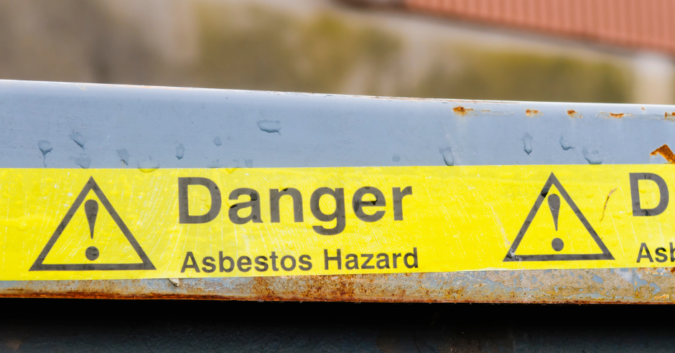Asbestos has sickened and killed more than 1 million Americans in the 20-year stretch spanning from 1999 to 2019. That’s according to data compiled at the Global Health Data Exchange (GHDE).
In recent years, asbestos-related death rates have actually gotten worse, especially among workers who were exposed to asbestos as part of their jobs. Data from the Institute of Health Metrics Evaluation shows more than 40,000 Americans died as a likely result of occupational exposure to asbestos in 2019 alone. Data from 2020 and 2021 has yet to be made available.
Sadly, none of this should be a surprise. Asbestos has been a well-known killer for decades. Exposure to asbestos can lead to several different types of fatal cancer, including lung cancer and mesothelioma. It can also lead to other deadly and debilitating diseases such as asbestosis.
Once hailed by the industry titans of a bygone era as a “miracle mineral” due to its natural strength, durability, and resistance to heat and electricity, asbestos was used in hundreds of different commercial applications.
Throughout much of the 20th century, asbestos was incorporated into the manufacturing of things like brakes, gaskets, insulation, paints, pipes, roofing and flooring tiles, and dozens of other products. That’s why, today, asbestos can be readily found in older homes, offices, schools, and workplaces, threatening all who live or work there.
But it may surprise you to learn that the deadly carcinogen is not yet banned in the United States. In fact, each year, literal metric tons of asbestos are still being imported onto American shores.
So, if asbestos is well-known and widely accepted to be a carcinogen — one that has killed more than 1 million Americans — the obvious question is: Why is asbestos still legal?
The answer is deceptively simple: It makes corporations money — and it has for generations.
All of those profits, however, come at the incalculable cost of human lives.
ADAO Calls on EPA to Ban Asbestos
In recent years, calls to ban asbestos from the U.S. have amplified, but no actions have been taken on the part of the federal government and the agency charged with assessing and monitoring the safety of chemicals and substances like asbestos, the U.S. Environmental Protection Agency (EPA).
When one considers the Frank R. Lautenberg Act, which governs U.S. chemical safety law, was passed by Congress in 2016, during the final year of President Obama’s second term, the lack of inaction more than 5 years later is astounding. The risk to Americans’ health does not seem to be incentive enough for the EPA to act.
As Linda Reinstein, co-founder and president of the Asbestos Disease Awareness Organization (ADAO), and Mustafa Santiago Ali, vice president of Environmental Justice, Climate, and Community Revitalization for the National Wildlife Federation (NWF), discuss in their recent joint article on the subject for Bloomberg Law:
“The simple fact is this: All Americans remain at risk—children playing near landfills where asbestos-laden materials have been dumped, families who unknowingly live-in older houses built with asbestos, and even firefighters who put their lives on the line every day to extinguish fires in millions of homes and buildings across the U.S. that still contain asbestos.”
Former President Obama saw the inability of the EPA to ban asbestos once and for all as an ongoing conflict of interest between private business and public health. (While the U.S. had passed a ban on asbestos in 1989, it was quickly overturned in 1991 with lobbying pressure from the chemical industry.) “Our country hasn’t even been able to uphold a ban on asbestos,” Obama said as he signed the Frank R. Lautenberg Act into law.
When the law passed, there was much hope that it would pave the way for the EPA to finally ban asbestos. But as Reinstein and Ali write in their Bloomberg Law article, “Still, the EPA hasn’t banned it.”
The Importance of ARBAN
Named after Linda Reinstein’s late husband who died from mesothelioma, the Alan Reinstein Ban Asbestos Now (ARBAN) Act has already garnered the support of nearly 70 co-sponsors, 18 attorneys general, and more than 30 trade unions and organizations.
While it appeared ARBAN was gaining traction in Congress toward the end of 2020, progress stalled and the bill ultimately never made it to the floor for a vote.
Under current chemical and safety laws, the EPA indeed has the power to ban asbestos outright, but it seems the agency is unwilling to do so, which — fortunately or not — leaves the fate of an asbestos ban to Congress.
ARBAN would seek to amend the Toxic Substances Control Act (TSCA) by completely banning the importation, distribution, processing, and utilization of asbestos in manufacturing without exemptions. The bill would also call on the chlor-alkali industry — currently the largest importer and user of asbestos — to find safer alternatives that do not jeopardize public health.
Globally, around 60 nations have banned the mining, importation, and use of asbestos, including the entire European Union, the United Kingdom, Australia, New Zealand, Brazil, and Canada.
Only time will tell if the United States will join their ranks.
